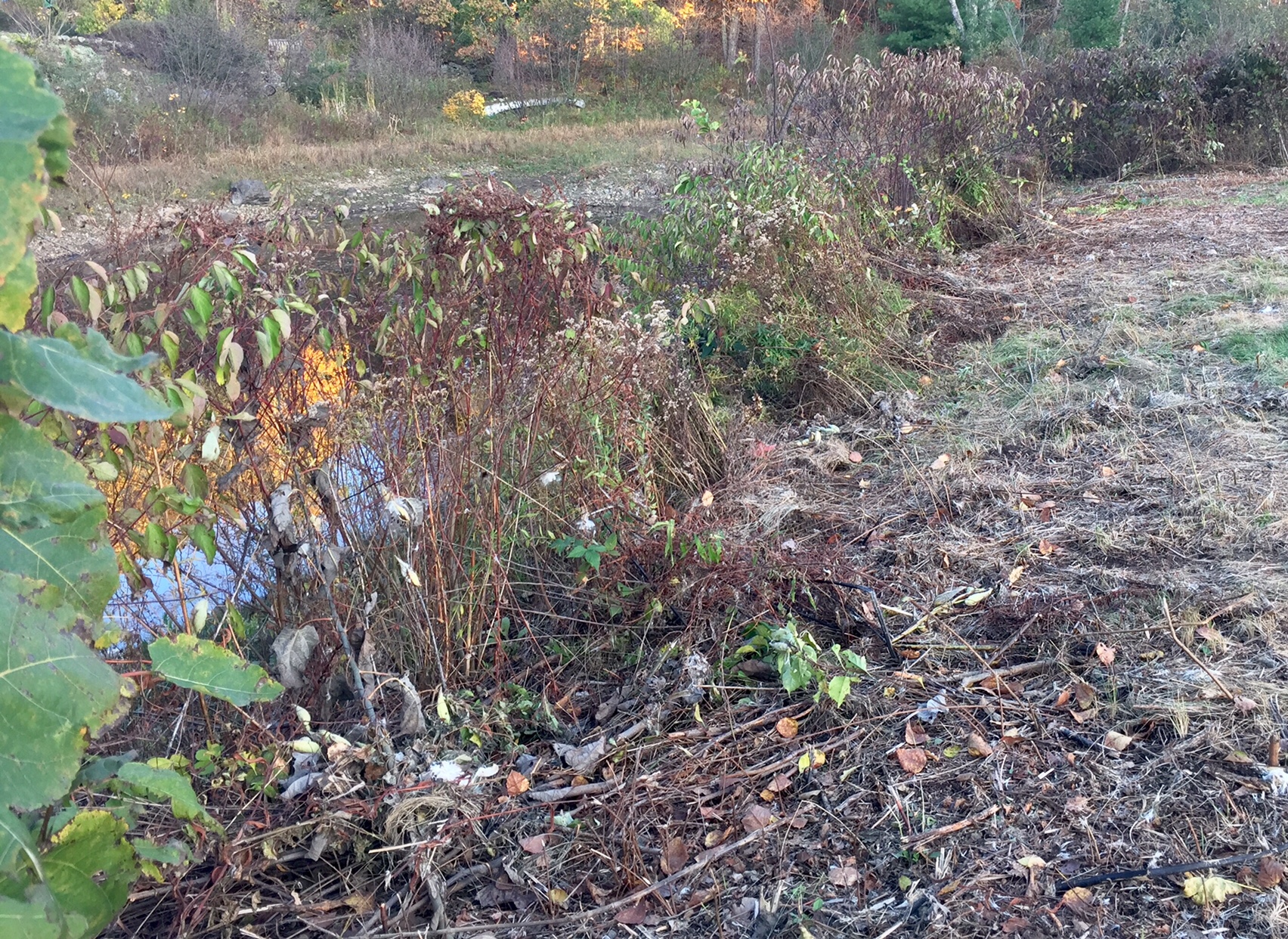Planted among these existing birches, giant blue and sum-and-substance hostas have miraculously escaped the hungry and merciless whitetail deer.
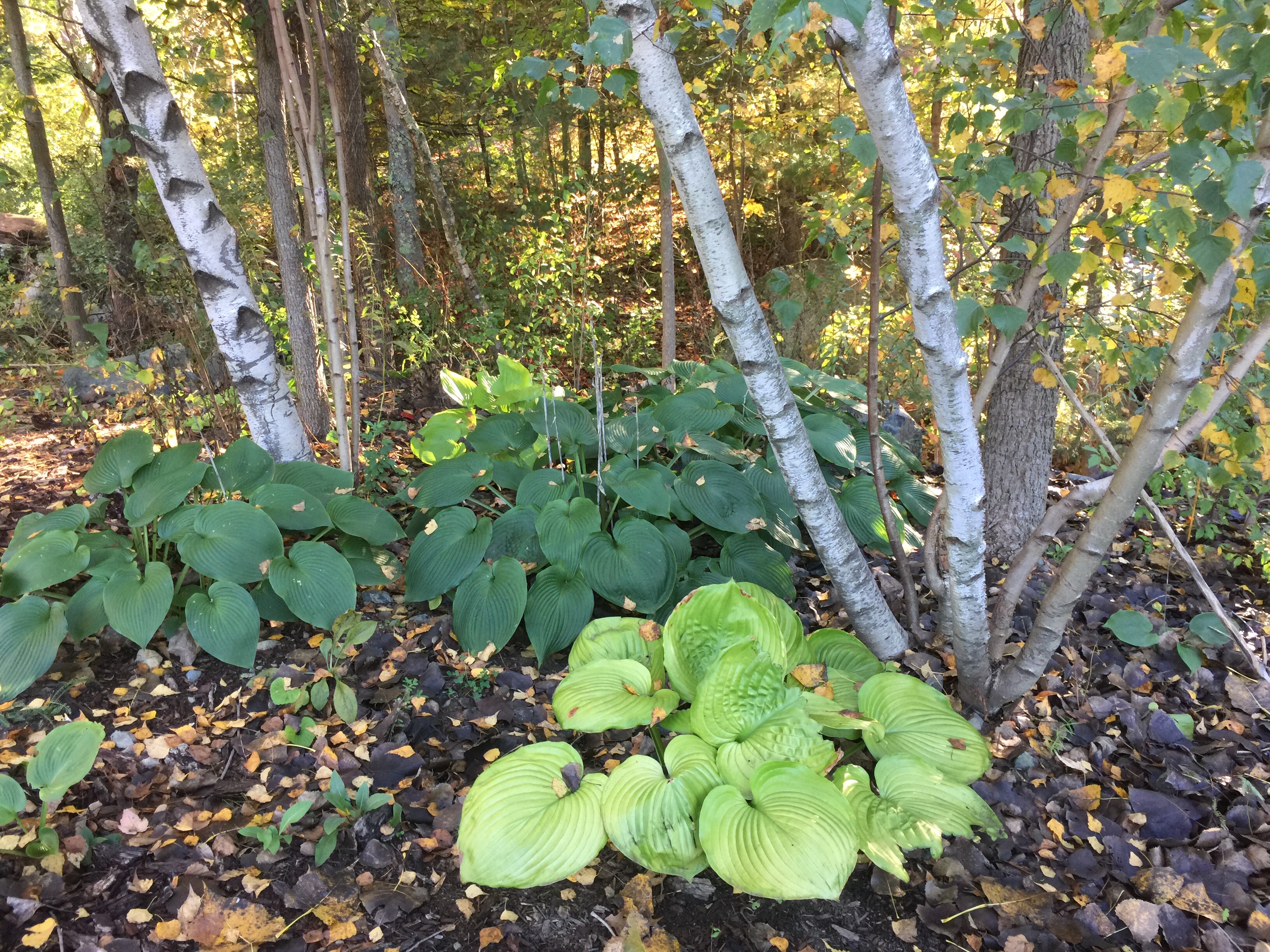
Planted among these existing birches, giant blue and sum-and-substance hostas have miraculously escaped the hungry and merciless whitetail deer.

Irish moss and sedums grow in between stones, in this area where water drains down the slope, before it eventually encounters willows, sweetgale, alders, clethra, cattails and other water-loving plants.
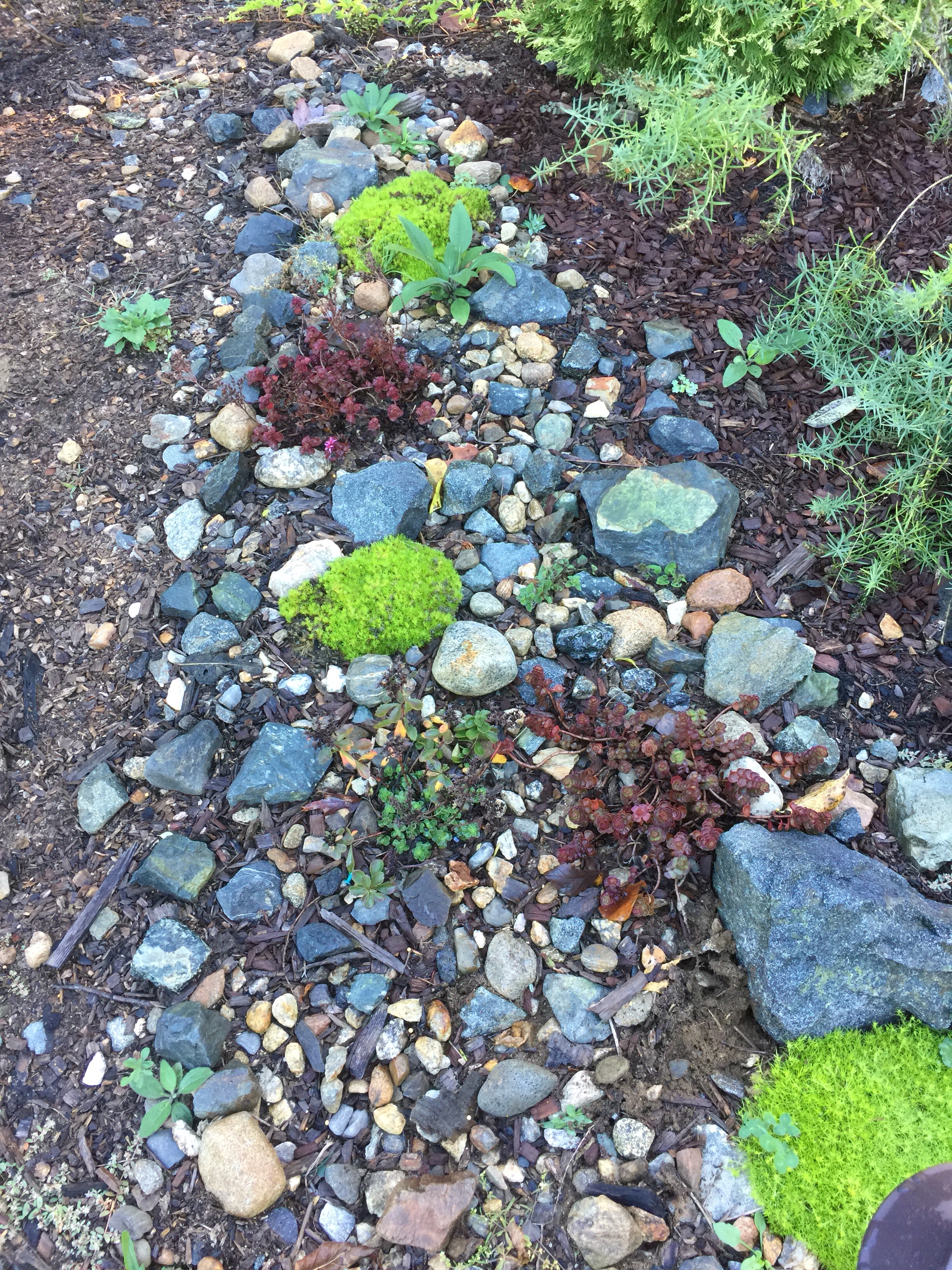
These asters volunteered to spring up in between the branches of alder. Glad they made the cut when I brought the weed whacker through this area. When they’re little they can be difficult to pick out and identify, along with everything else that grows next to the pond.
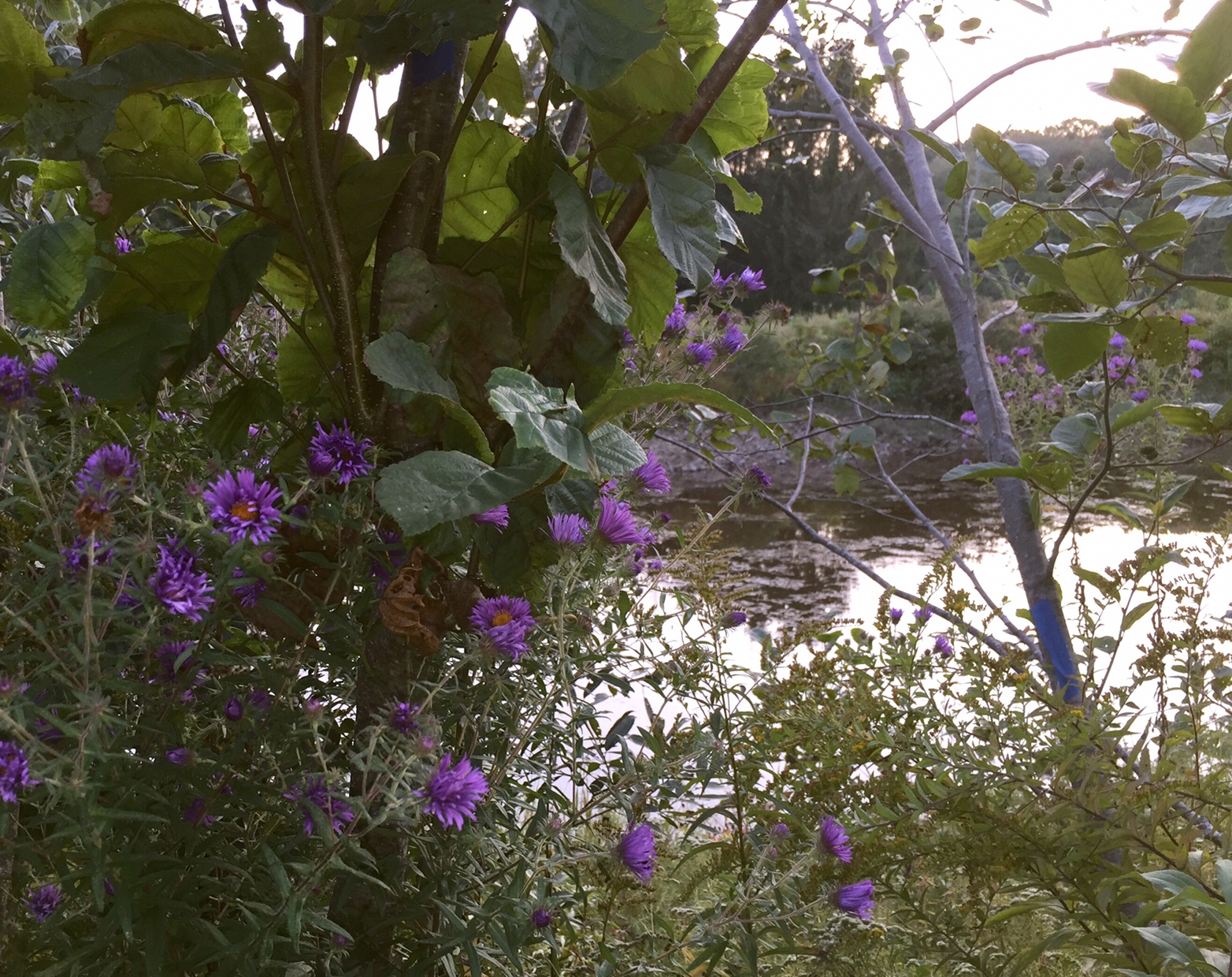
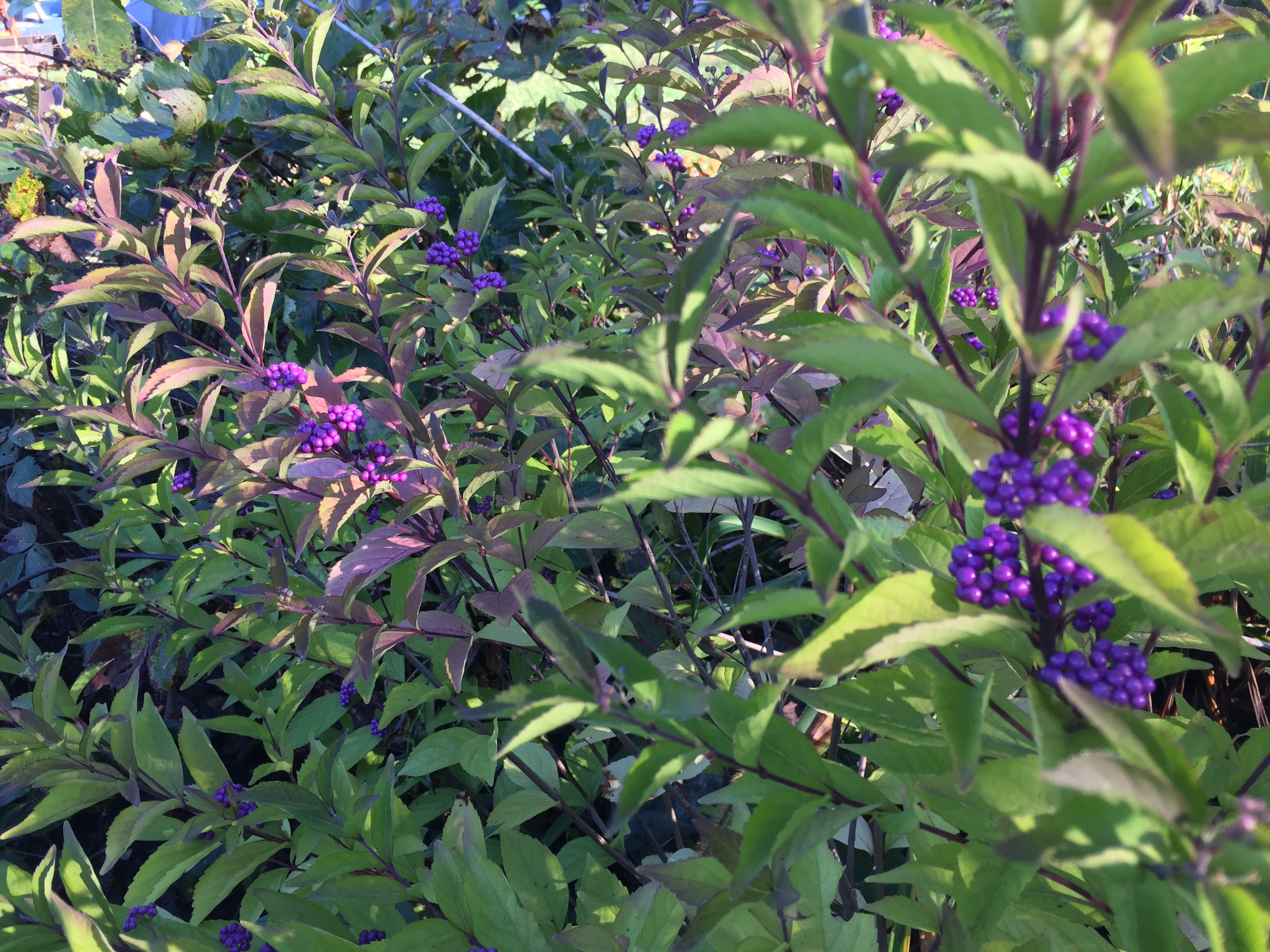
Out pruning one day, I turned around, and here was this giant wasp nest, about three times as big around as my head! Evidently, it had been concealed in this willow shrub. Fortunately, it’s no longer inhabited…but think I’ll wait to prune this shrub, just the same.
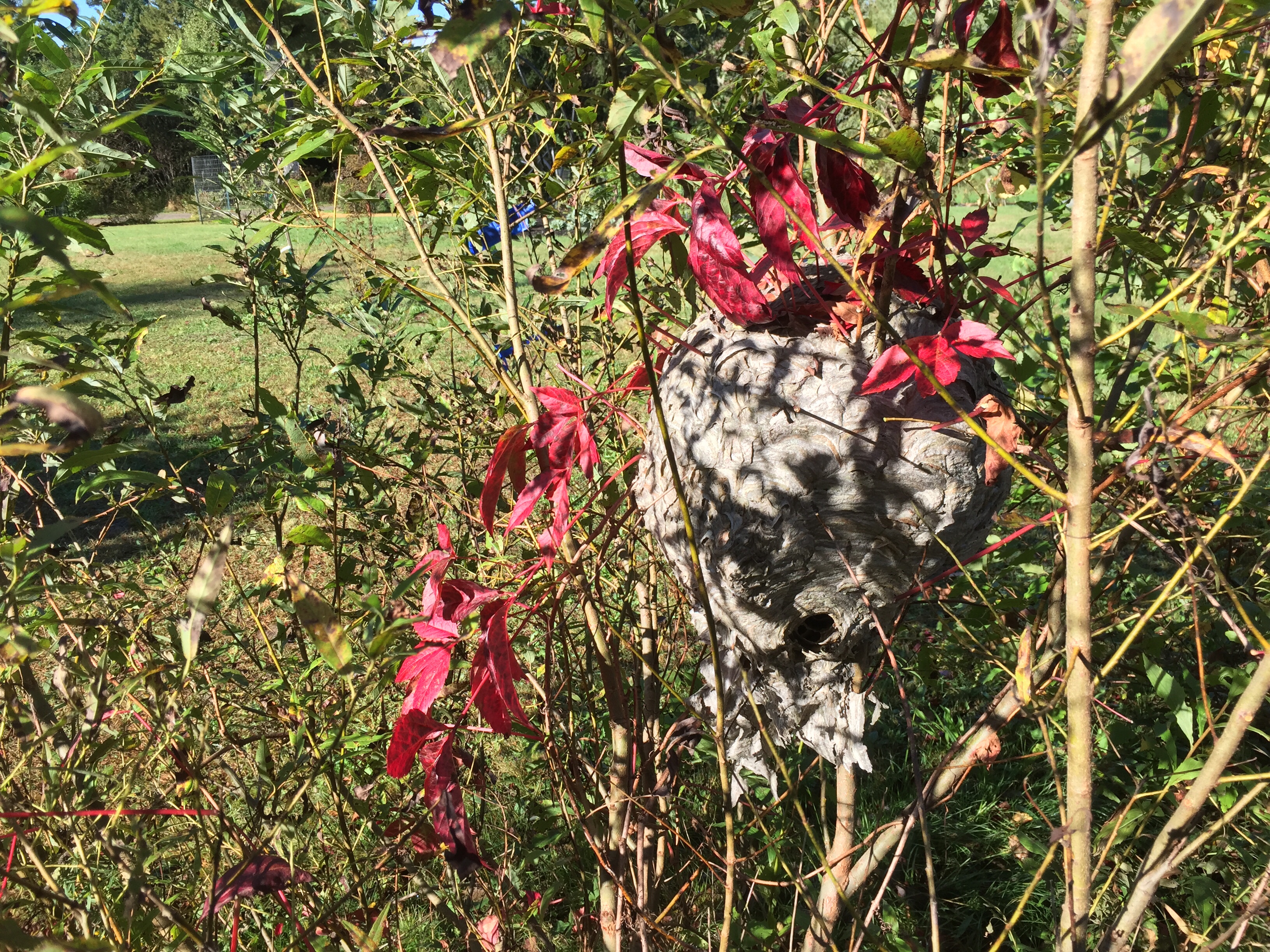
A young Aesculus parviflora – think I planted this one a year or two ago and it’s finally starting to grow a bit.
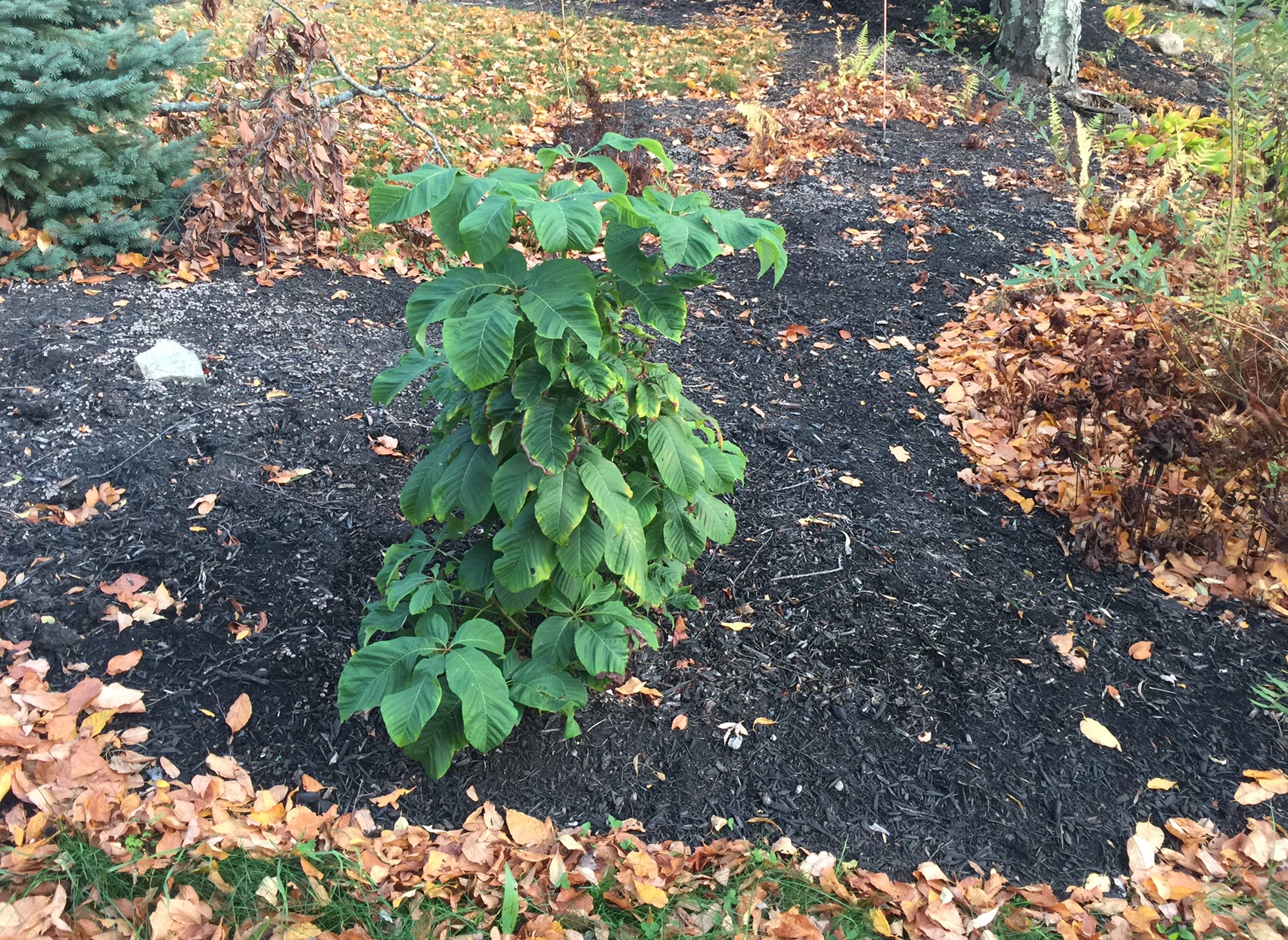
Now that their leaves have dropped, the “Heritage” river birches are showing off their beautiful bark. We planted these in 2012, if I remember correctly. They sit right over where some of the densest knotweed rhizomes were.
In the foreground is viburnum, bayberry, sweetfern and a dogwood. The dogwood and two of its buddies have had their roots pruned in anticipation of being transplanted next spring.
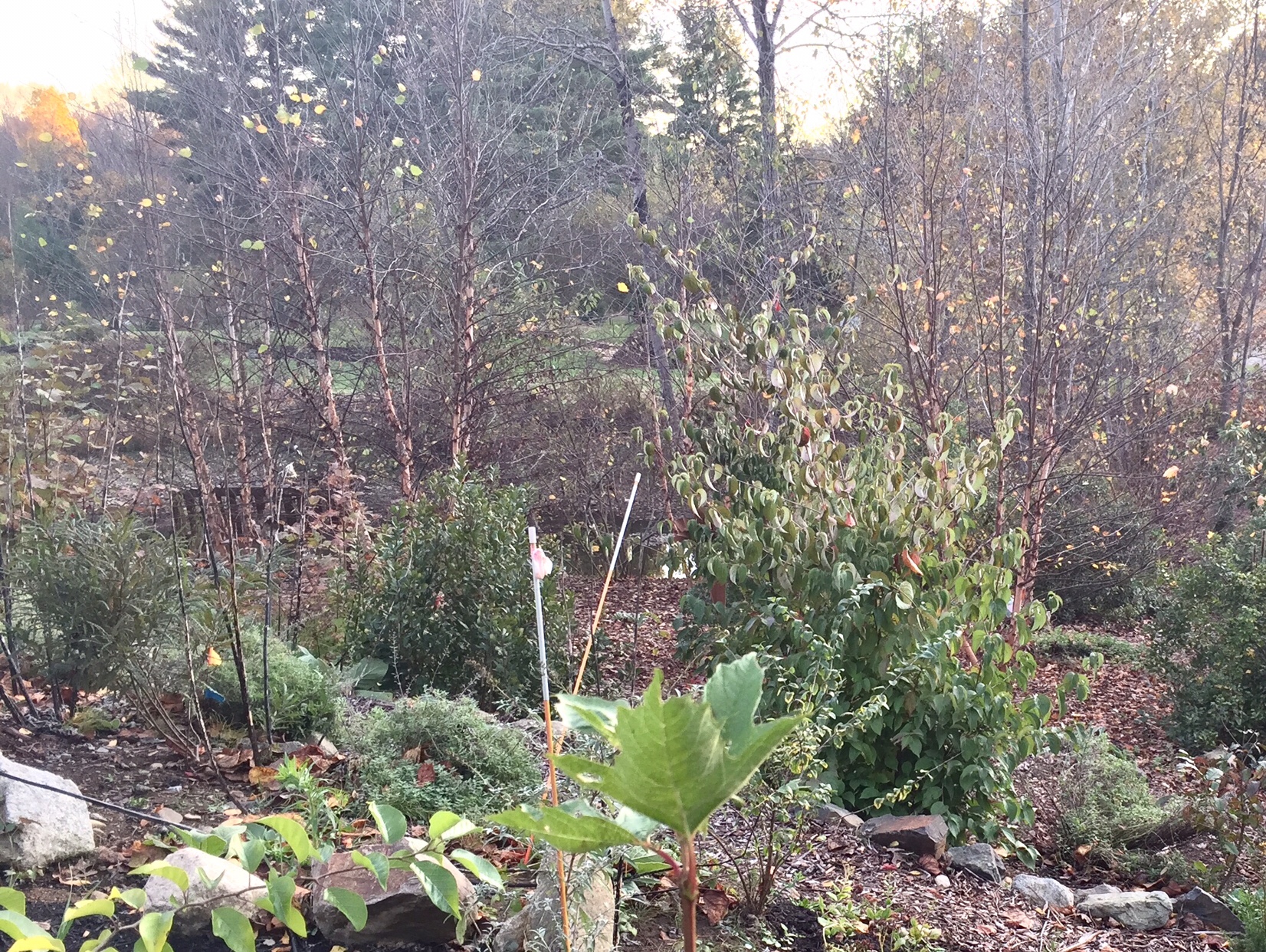
Gymnosporangium juniperi-virginianae again. These are the things that later turn bright orange in the spring rain and cause red spots on apples and crabapples. Though it does not appear to harm the junipers, I cut hundreds of these things out of our Eastern redcedars (Juniperus virginiana), as many as I could reach.
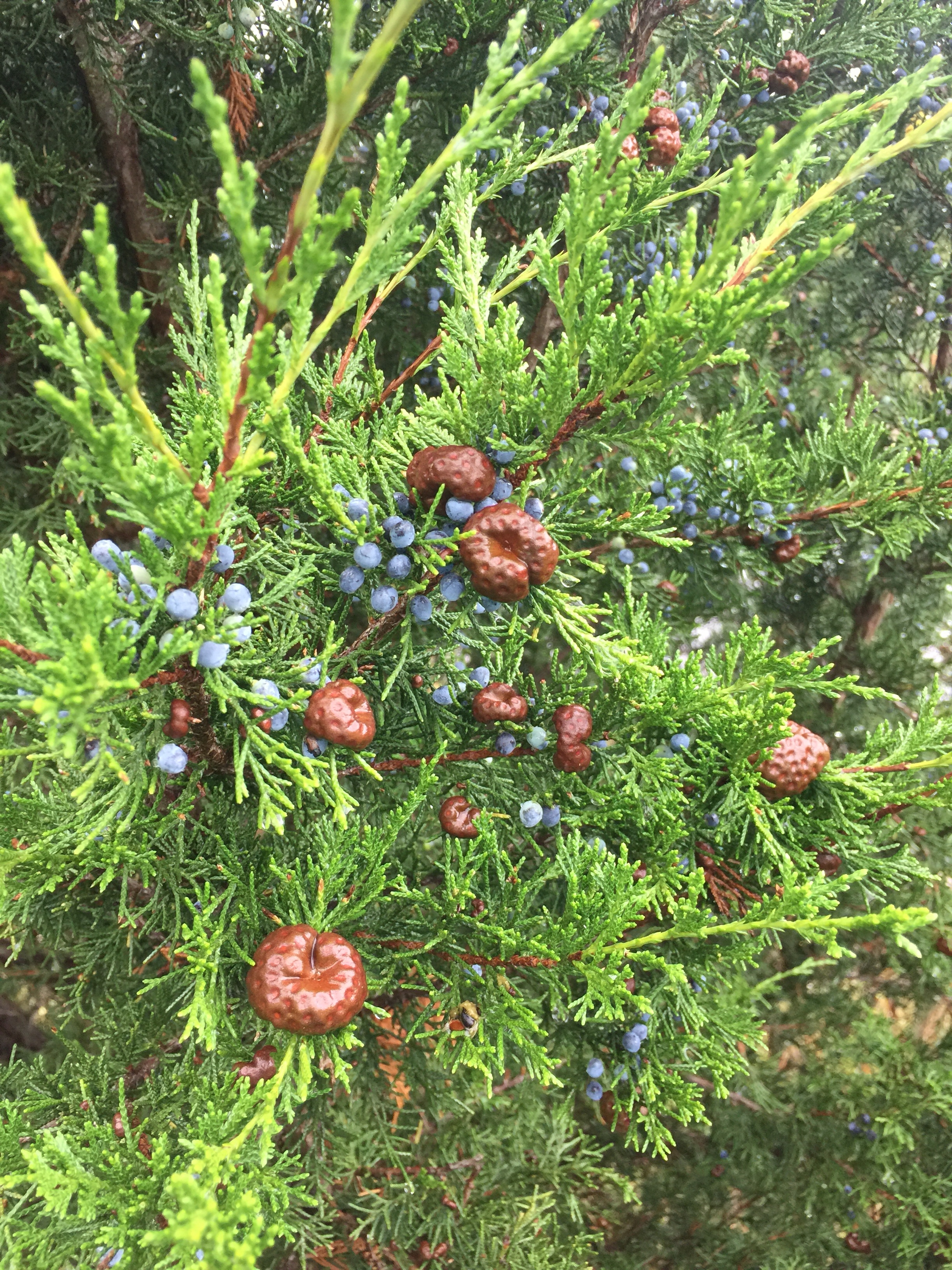
A branch of a small (about 12′ tall) tree, a volunteer on the north (rocky) side of the pond. We think it may be a winterberry holly.
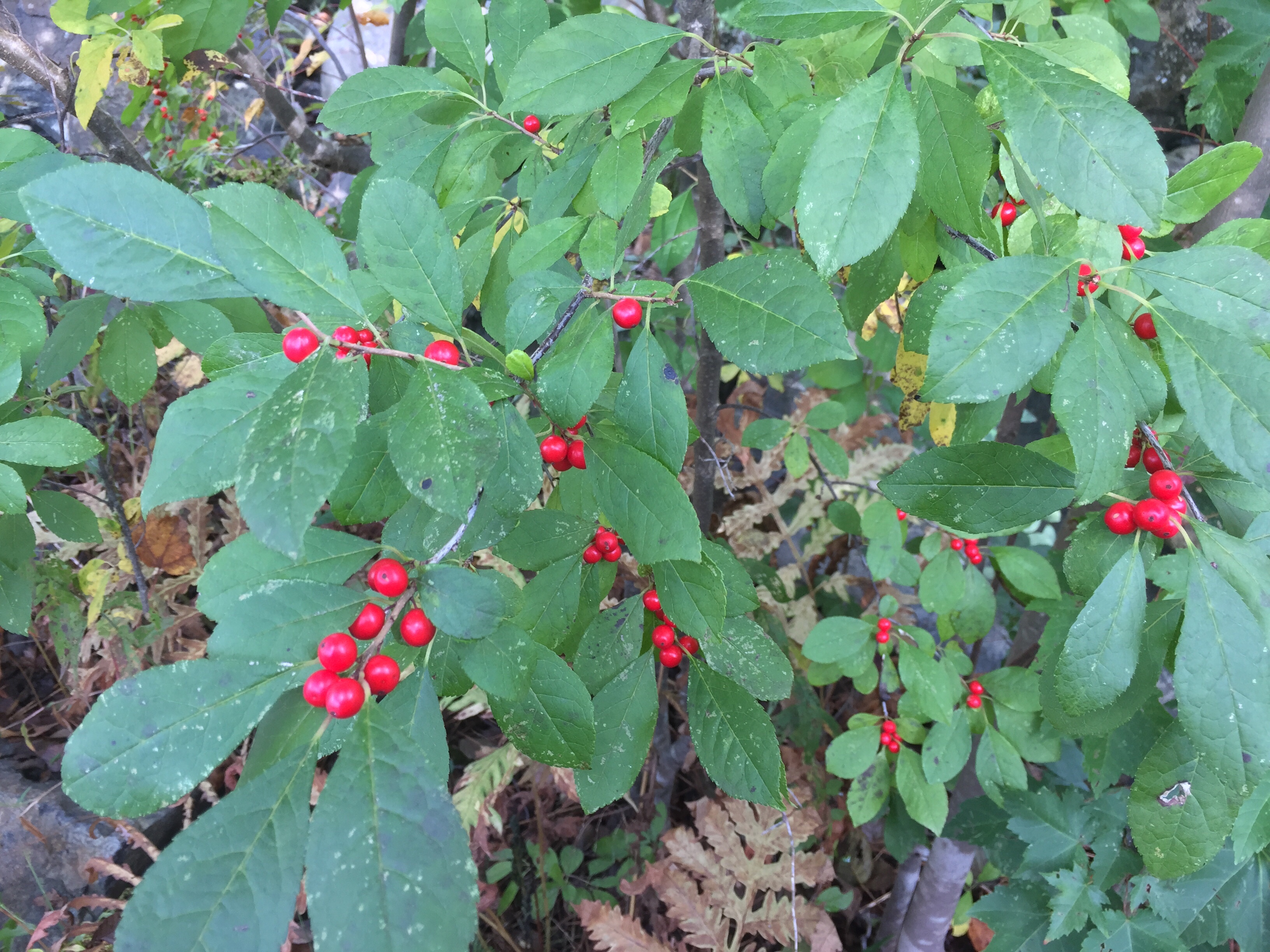
This may not look like much, but it’s important. The plants immediately bordering the pond (dogwoods, pussy willows, elm) remain unmowed for the winter. A strip that contained some wildflowers (milkweeds, asters, daisies, goldenrods, etc.) yet also some invasives (mainly field bindweed, or mile-a-minute) benefits from being mowed.
